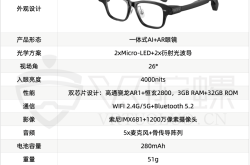IoT Terminals in the 6G Era: Highly Intelligent, Multi-Capability Integration, and Deeply Embedded in the Physical World
![]() 11/28 2025
11/28 2025
![]() 531
531
At the 2025 6G Development Conference, which was recently held, Academician Wu Hequan from the Chinese Academy of Engineering delivered a keynote speech titled "Building a New 6G Development Ecosystem with Terminal Innovation as the Starting Point." He put forward the idea that the integration of 6G and AI will enable mobile terminals to step into a new era of agent technology. Besides AI-enabled smartphones, wearable devices, XR gear, industrial modules, in-vehicle terminals, and satellite terminals all boast a high degree of intelligence. From the author's point of view, 6G will pave the way for an even wider range of IoT scenarios in the future. It's a given that IoT terminals in the 6G era will fully incorporate AI capabilities, giving rise to new AIoT terminal forms. Meanwhile, based on the requirements and capability systems of 6G scenarios, IoT terminals will present some entirely novel forms and innovations.
IoT Terminals in the 6G Era: Also Agent Terminals
In his speech, Academician Wu offered a detailed description of the future form of AI smartphones, specifically agent smartphones. These devices come equipped with high-performance AI computing chips that can run generative AI models with billions of parameters at the edge. They have capabilities like perception, memory, planning, and tool usage, allowing them to autonomously understand and break down complex tasks, roll back states, adapt, and collaborate through swarm intelligence to achieve end-to-end automated execution.
Apart from smartphones, Academician Wu believes that AI glasses and XR devices are typical terminals for collaborative agent applications in the 6G era. For instance, the deep integration of AI and XR, along with enhancements like eye tracking and gesture recognition, further boosts the naturalness and immersion of interactions. Lightweight designs and high-performance display technologies enhance user experiences, shifting users from "watching videos" to "stepping into videos," becoming a key driving force for 6G.
Agents aren't just limited to consumer-side terminals; they can also be applied to industrial modules, including machine tool agents, robot agents, AGV (Automated Guided Vehicle) agents, and equipment monitoring agents. Moreover, based on industrial scenario needs, there are also R&D agents, supply chain agents, and production line agents. The unique capabilities of 6G effectively meet the requirements of agent-based industrial modules, such as over 1Gbps bandwidth, latency below 1ms, 99.999% reliability, a device access density of millions per square kilometer, and hardware-level TEE (Trusted Execution Environment) security. In-vehicle modules equipped with agents have built-in computing power, significantly cutting down decision-making time in complex scenarios. The reduced latency in interactions between vehicles, roadside units, and the cloud is also a result of the 6G+AI integration.
Academician Wu summarized eight aspects of application model transformation driven by terminal evolution in the 6G era: diversified terminal forms, intelligent terminal functions, collaborative terminal communication, multi-modal human-machine interaction, heterogeneous content interaction, personalized content supply, diversified terminal connections, and ubiquitous terminal services. The "Eight Transformations" outlined by Academician Wu show the development direction of terminals in the 6G era, representing terminal transformations driven by AI advancements while revealing some trends and characteristics in the evolution of IoT terminals.
If smartphones in the 6G era are agent smartphones, then many IoT terminals embedded with AI capabilities in the 6G era will also be powerful agent terminals. Agent-based IoT terminals may have several new characteristics, mainly including:
1. AI-Native Capabilities: With AI embedded in IoT terminals, edge/terminal AI computing power sees a significant increase. For example, terminals may have stronger edge AI inference (and even partial training) capabilities, enabling real-time processing of massive sensor data and local decision-making (e.g., anomaly detection, adaptive responses), substantially reducing reliance on the cloud and latency.
2. Network-Assisted Terminal Intelligence: By leveraging the AI-native capabilities of 6G networks, model updates, resource scheduling optimizations, and collaborative sensing task allocations can be carried out for IoT terminals, preventing them from becoming isolated information islands.
3. Autonomous Collaboration and Self-Organization: Intelligent IoT terminal groups can form self-organizing networks, engage in collaborative sensing, task allocation, and collective decision-making (e.g., swarms of micro-drones collaborating on inspections) through direct device-to-device communication and distributed AI algorithms.
It's clear that consumer IoT terminals like smart glasses, smartwatches, and XR devices can provide computing power services at the edge, significantly enhancing consumer experiences. Meanwhile, agents integrated into industrial modules, vehicular networking modules, and other industry application terminals strengthen edge computing capabilities in industrial scenarios, to some extent reflecting the "Eight Transformations" framework proposed by Academician Wu and the characteristics of agent-based IoT terminals.
IoT Terminal Forms Aligned with 6G Capabilities
From the author's perspective, high-end agent-based IoT terminals will emerge in scenarios with abundant resources and high-performance computing demands, especially where energy consumption isn't a bottleneck. However, not all capabilities brought by 6G are for resource-abundant scenarios; some new capabilities open up novel scenarios in resource-constrained environments, influencing the forms of IoT terminals.
6G will enable connections among humans, machines, and objects, bridging the physical and virtual worlds. It's expected to integrate sensing and AI capabilities into the network, becoming a new digital infrastructure that supports new users and enables new applications. In terms of scenarios, the ITU believes that 6G will enhance and expand upon the three major 5G scenarios, covering six 6G scenarios: immersive communication, massive-scale connectivity, ultra-reliable low-latency communication, AI-communication convergence, sensing-communication convergence, and ubiquitous connectivity.

In response to 6G's key capabilities, IoT terminals will take on new forms. Beyond AI agent terminal forms, several trends are worth noting:
1. Evolution of Physical Terminal Forms: Miniaturized or even invisible IoT terminals may emerge, including micro-sensor nodes and environmental sensing terminals. Some sensors, modules, and energy harvesting units may be hidden in buildings, protective materials, clothing, or implanted in biological devices like medications. Although these forms have seen limited adoption so far, the ultra-large-scale and ubiquitous connectivity of 6G networks will enable broader applications.
2. Passive IoT Terminals at Massive Scale: Although passive IoT technologies were introduced in the 5G-A phase, their large-scale commercialization is still uncertain. The 6G era will see mature passive IoT commercialization, with massive, ultra-low-cost terminals becoming the norm. Backscatter tags and ambient energy harvesting modules, which are core components of passive IoT terminals, will witness technological breakthroughs in the 6G era.
3. Emergence of Integrated Communication-Sensing-Computing Terminals: IoT terminals will not only have communication capabilities but also visual, auditory, tactile, and environmental sensing abilities. Advances in communication technologies will enable some sensing capabilities, allowing terminals to "sense" the environment "incidentally" during communication. Meanwhile, embedded AI capabilities and TinyML will enable a degree of intelligence in resource-constrained terminals, further transforming IoT terminals into small-to-medium-scale agent terminals.
In conclusion, IoT terminals in the 6G era will no longer be just "connected devices" or "sensors" but highly intelligent, multi-capable entities deeply embedded in the physical world. 6G will bring unprecedented capability advancements to IoT terminals, driving the construction of an intelligent world where perception, intelligence, and connectivity are everywhere, creating a deeply coupled physical-information ecosystem.








